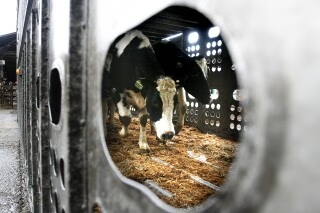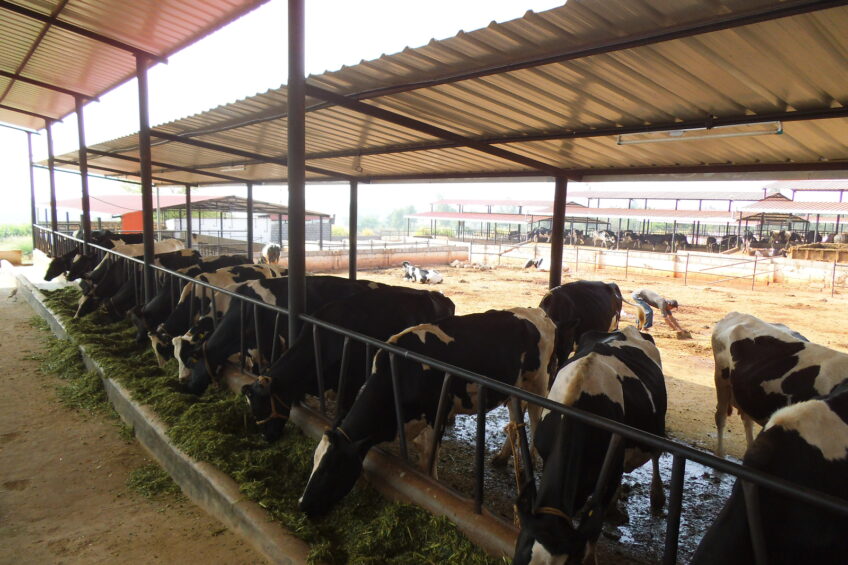Find out how human activity, not migrant birds, spread H5N1 in dairy farms. Explore the USDA’s findings and why biosecurity measures are important.

Challenging earlier theories regarding its primary sources, the most recent study from the USDA’s Animal and Plant Health Inspection Service (APHIS), a leading authority in animal health and disease control, offers vital new information on the spread of the H5N1 virus in American dairy facilities. Against the belief that wild, migrating birds are the significant spreaders, the paper emphasizes human actions and tools as the main offenders. This change of perspective highlights the necessity of improved biosecurity in the agricultural field.
The primary source of the H5N1 spread is human activities, including livestock transportation across states and trailer and vehicle sharing. Significant results from the USDA analysis expose:
- 50% of affected farms use shared trucks and trailers without proper cleaning.
- 30% of dairy employees worked at multiple farms within a month of the outbreak.
- All farms observed wild birds, but only 29% reported sightings of sick or dead birds near the onset of clinical signs.
These results depend on policymakers and farmers trying to stop further epidemics. By emphasizing human-mediated transmission, this paper not only refutes false beliefs but also directs the creation of more successful disease management plans for contemporary dairy production. The impact of H5N1 on public health is significant, with the potential for severe illness and death in humans. See on for further details.
The Highways of H5N1: Cattle Movement and Virus Transmission
APHIS’s most current USDA study on the H5N1 virus’s proliferation across dairy farms highlights essential transmission channels. The poll names local farm contacts and interstate cow movements as leading viral carriers. Even if they are asymptomatic, cattle moving between states typically carry the virus, complicating control attempts. Locally, shared and unstilled vehicles help the virus to travel across farms. Human activities greatly influence transmission, particularly staff movement between farms without appropriate cleanliness.
This emphasizes the importance of strict biosecurity policies. Improved sanitation, strict health monitoring, and appropriate hygienic training for agricultural employees may reduce these hazards.
For more information, see our thorough analyses in USDA Takes Action to Isolate and Eliminate H5N1 Bird Flu in Dairy Herds and Decoding the Impact of H5N1 in US Dairy on Public Health.
Viral Superhighways: The Critical Role of Shared Trucks and Trailers in H5N1 Transmission
The H5N1 virus is mainly disseminated through the everyday use of vehicles and trailers. Unbelievably, half of the impacted farmers neglected to clean their automobiles, which turned them into viral highways, and half of them shared vehicles. This emphasizes how urgently strict biosecurity rules are needed to guarantee correct sanitation and stop the spread of dangerous illnesses.
The transmission of the virus has also been substantially influenced by staff mobility across farms. Thirty percent of the workers in the dairies visited or worked at other dairies thirty days after the epidemic. Given that human activity has been a significant vector in spreading H5N1, this emphasizes the requirement of strict on-farm biosecurity procedures and staff adherence to these criteria.
Transmission of H5N1 depends much on cattle movements. According to the USDA analysis, 20% of impacted farms got cattle within 30 days of seeing clinical symptoms, implying infected animals were brought into these herds. Moreover, 60% of farms kept transporting animals from their premises after the start of clinical symptoms, therefore aggravating the dissemination. To stop the spread of H5N1, strict biosecurity policies and stricter rules on livestock movements during an epidemic are essential.
The Avian Mirage: Reassessing the Role of Wild Birds in H5N1’s Spread
Although wild birds were found on every farm under study, their contribution to H5N1 spread is doubtful. The USDA discovered that just 29% of these farms had ill or dead wild birds within 30 days of cows displaying clinical symptoms. This suggests that while wild birds may be present, they are not the primary carriers of the virus. Instead, human activities and shared equipment are likely means of transmission.
Other animals complicate the distribution of H5N1. Cases of ill or dead cats and birds point to possible cross-species transmission since 80% of farms have cats and 20% have poultry. This emphasizes how urgently thorough biosecurity policies covering more than just livestock are needed.
The Bottom Line
The USDA study emphasizes that human activities and equipment are more responsible for the H5N1 virus spreading throughout dairy farms than wild birds. Transmission of the virus depends mostly on shared vehicles, trailers, and agricultural staff. Although wild birds were present on every impacted farm, their contribution to spreading the virus is negligible compared to human and technological aspects.
This realization makes stringent biosecurity policies vital. Dairy producers must concentrate on cleaning common cars and limiting farm staff cross-visits. Failure to do so could lead to further outbreaks and significant economic losses. Improved biosecurity policies depend on protecting the sector and public health.
Stakeholders must follow strict biosecurity policies, including limited animal movements, frequent vehicle sanitization, and extensive training for farm workers. These actions, which can be implemented through stricter regulations and industry-wide initiatives, depend on protecting animals and stopping the spread of H5N1. Policymakers should consider these recommendations when formulating disease management plans, and farmers should prioritize these measures in their daily operations.
Key Takeaways:
- Human activity and equipment, rather than wild birds, are the primary spreaders of the H5N1 virus among dairy farms.
- Interstate cattle movements and local farm interactions are critical factors in the virus’s dissemination.
- 50% of affected farms used shared trucks and trailers, many of which were not properly cleaned.
- 30% of dairy farm employees worked at or visited other dairies within 30 days of the outbreak.
- 20% of farms received new cattle within 30 days of exhibiting H5N1 symptoms, while 60% continued moving animals post-onset.
- Despite all farms observing wild birds, only 29% reported seeing sick or dead birds within 30 days of the outbreak.
- A notable presence of cats (80%) and poultry (20%) on farms, with incidences of sickness and death among them.
- The critical need for stringent biosecurity measures is emphasized throughout the report.
Summary:
A study by the USDA’s Animal and Plant Health Inspection Service (APHIS) challenges the notion that wild birds are the primary carriers of the H5N1 virus in American dairy facilities. The study reveals that human activities and tools are the main offenders, with 50% of affected farms using shared trucks and trailers without proper cleaning. Additionally, 30% of dairy employees worked at multiple farms within a month of the outbreak. All farms observed wild birds, but only 29% reported sightings of sick or dead birds near the onset of clinical signs. The study emphasizes the importance of strict biosecurity policies, including improved sanitation, health monitoring, and hygienic training for agricultural employees to reduce the risks of H5N1 transmission. It also highlights the critical role of shared trucks and trailers in H5N1 transmission, with half of the impacted farmers neglecting to clean their automobiles. Staff mobility across farms also significantly influences the transmission of the virus, with 30% of workers visiting or working at other dairies thirty days after the epidemic. The study concludes that human activities and equipment are more responsible for the H5N1 virus spreading throughout dairy farms than wild birds.












